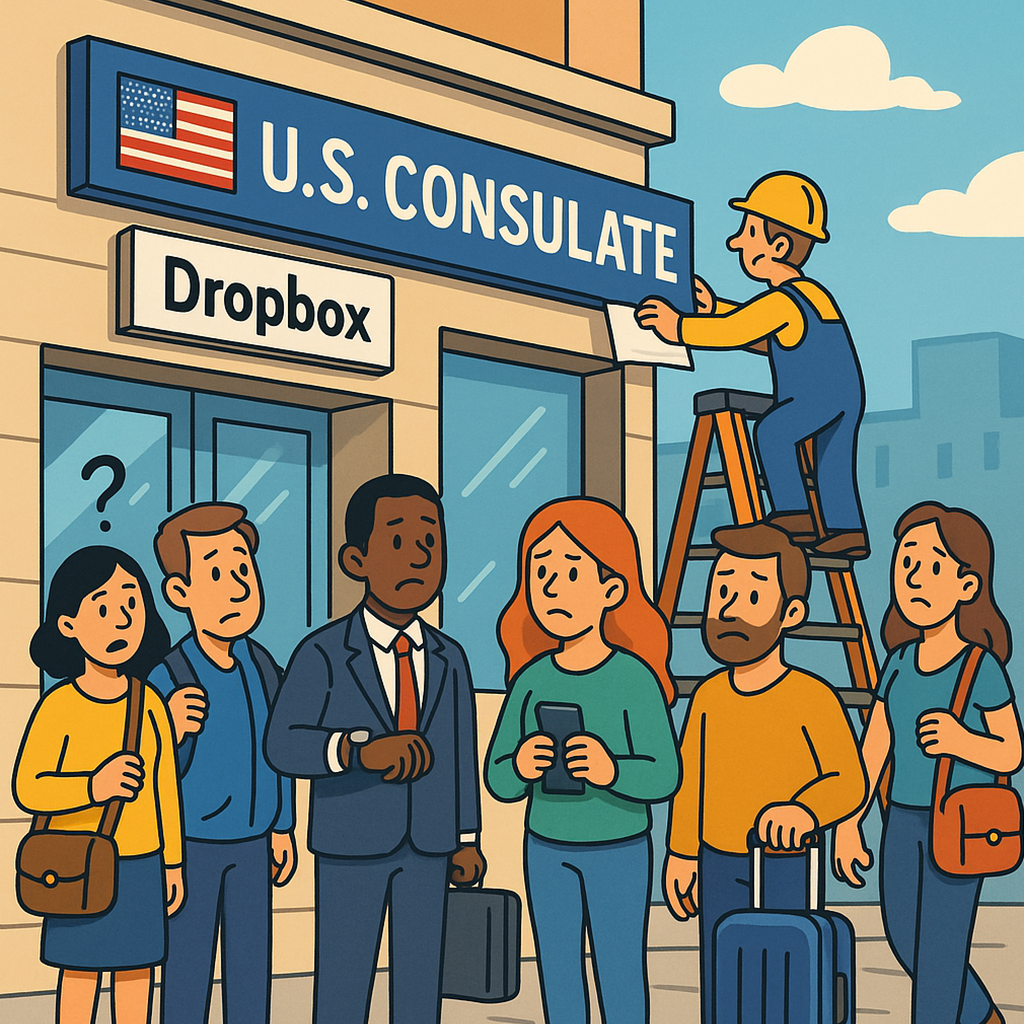The convenience is gone. The delays are coming. Here’s how to prepare.
For years, the visa interview waiver program, also known as “Dropbox”, offered foreign national employees a much-needed shortcut. It allowed many to renew visas abroad without attending in-person interviews.
But starting September 2, 2025, that shortcut is going away.
The U.S. Department of State has announced a major U.S. visa interview rule change that affects nearly all nonimmigrant visa categories. The stated reason is security and fraud prevention. But the impact on HR teams and global talent is immediate and far-reaching.
What the 2025 Visa Interview Rule Change Means for Employees
Starting in September, most applicants will need to appear for in-person interviews, even for simple renewals. This includes:
- H-1B professionals and their families (H-4)
- L-1 intracompany transferees
- O-1 individuals with extraordinary ability
- E-2 investors and employees
- F-1 students
- Children under 14 and adults over 79
Only a few categories remain eligible for waivers:
- B-1/B-2 tourist visa renewals within 12 months of expiration
- Certain diplomatic or official visa types
That’s it.
Why the U.S. Visa Interview Rule Change in 2025 Creates Operational Risk
For HR teams, this isn’t a policy footnote. It is a logistics challenge that will reshape how companies plan for international hiring and travel.
Key concerns include:
- Longer wait times at consulates already facing staffing issues
- Higher out-of-pocket costs for employees (travel, accommodation, lost work time)
- Unpredictable delays in return travel after consular appointments
- Family stress, especially for employees with dependents also needing interviews
- Increased complexity in onboarding and workforce planning
Before, renewals felt low-stakes. Now, they require the same planning rigor as first-time visa stamping.
✅ HR Checklist: Preparing for the Visa Interview Changes
1. Prioritize renewals before September 2
Some employees may still qualify for interview waivers. Act now while they’re still available.
2. Communicate the change clearly and early
Employees may not realize this applies to them. Don’t wait for last-minute panic.
3. Build in longer timelines
Add buffer time for consulate appointments and visa processing before reentry.
4. Track consulate-specific updates
Wait times and rules vary by location. Monitor your most common consulates closely.
5. Help employees prepare for interviews
Provide employment verification letters, FAQs, and country-specific guidance.
The Shift in Strategy: From Convenience to Contingency
This rule change makes visa renewals less flexible, more expensive, and much more uncertain. For HR and mobility leaders, it is no longer safe to treat renewals as routine.
This moment requires:
- Proactive planning with immigration counsel
- Clearer communication with employees
- Tighter coordination across HR, Legal, and Talent Acquisition
- A process that can flex with changing consular policies
Final Takeaway: Plan Early and Remove Surprises
The U.S. visa interview rule change in 2025 eliminates one of the few process efficiencies HR teams could count on. The best response is early action.
If your company hires international talent or supports U.S. visa holders, this is the time to revisit your workflows, timelines, and escalation paths.
The era of fast and easy visa renewals is coming to an end. HR’s ability to reduce disruption will depend on how well you plan ahead, starting now.
Disclaimer: Content in this publication is not intended as legal advice, nor should it be relied on as such. For additional information on the issues discussed, consult a WayLit-affiliated attorney or another qualified professional.


.svg)


